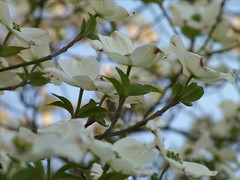Facing Death Unmedicated
Sober Joy: THE DELUSION OF RELIGION
Barnabas recently looked at the relationship between religion and orthodox faith in Christ: Following Father Alexander Schmemann of blessed memory, he states that religion medicates man against the reality of death. Orthodoxy, he says, teaches that Christ has overcome death.
Dr. David Bentley Hart spoke on a similar subject when he addressed the Saint Vladimir’s Seminary Summer Institute last year. The lecture was based on his earlier book, The Doors of the Sea: Where was God in the tsunami?. According to the lecture, he never intended to write this book. It grew out of a series of columns he wrote. He found the various religious responses to the tsunami entirely inappropriate and not accurate as descriptions of Christian beliefs about death and suffering in this life.
He begins by noting an old anthropological study entitled The Primitive Mind which shows that indigenous peoples are nearly universal in seeing death as unnatural. (In my mind, this is exactly the opposite of what I expected.) In the various animist and spiritist cultures, death is always viewed as an interruption. Whether explained by spirits that come to take the soul or some other model, death is always a stranger, an interruption. It is a break, ending a story which could otherwise have continued indefinitely.
You should listen to the lecture; Dr. Hart is far more articulate in describing this than I.
Barnabas’ says that religion attempts to medicate us against the reality of death. My spiritual father frequently uses the image of medicating oneself against the various pains of this world. We use various pleasures to feel good and numb the pain, the bad feelings. We use good things that have been created by God as drugs to numb ourselves to the pain.
This pain is nothing other than death and the fear of death.
No one has to teach us to fear death. Before we even realize that the life of one we love can be ended, we learn that we die a little every time we are told no or something is taken from us. And we learn — are we taught by example or do we develop responses by instinct? — to protect ourselves from death. We learn to act motivated by the fear of death.
In the resurrection, Christ conquers death by his own death. He submits, of his own free will, to the punishment for sin, though he knew no sin. He fills death with the presence of God — the holy Trinity which gives life to the world and is the source of all life. Death is turned inside-out! It ceases to be the end and becomes the end of the beginning. Christ has conquered death; it has been down-trodden, trampled upon, and completely stripped of its power.
As a result, all the little deaths that we face are paths to new life. They prepare us for the last death, and so they prepare us ultimately to expect the resurrection. When we balk at the prospect of what we must do — whether living virtuously or merely praying a simple rule — and the same old voice says, in whatever manner, “If I do this, I shall surely die,” it is true. We will die just a little; yet be not afraid. Christ has conquered death. You will be raised from this little death, and you will be raised from the final death to an eternal, incorruptible life.
But these deaths must be faced without being numbed by religion or sex or television or food or alcohol or any other addiction that we use to numb the pain. The pain must be borne without medication; it must be faced in its full reality.
Only then, when we have learned to face reality, will we be raised to new life. We will be made real, to borrow an image from The Velveteen Rabbit. We will finally be real and alive.

